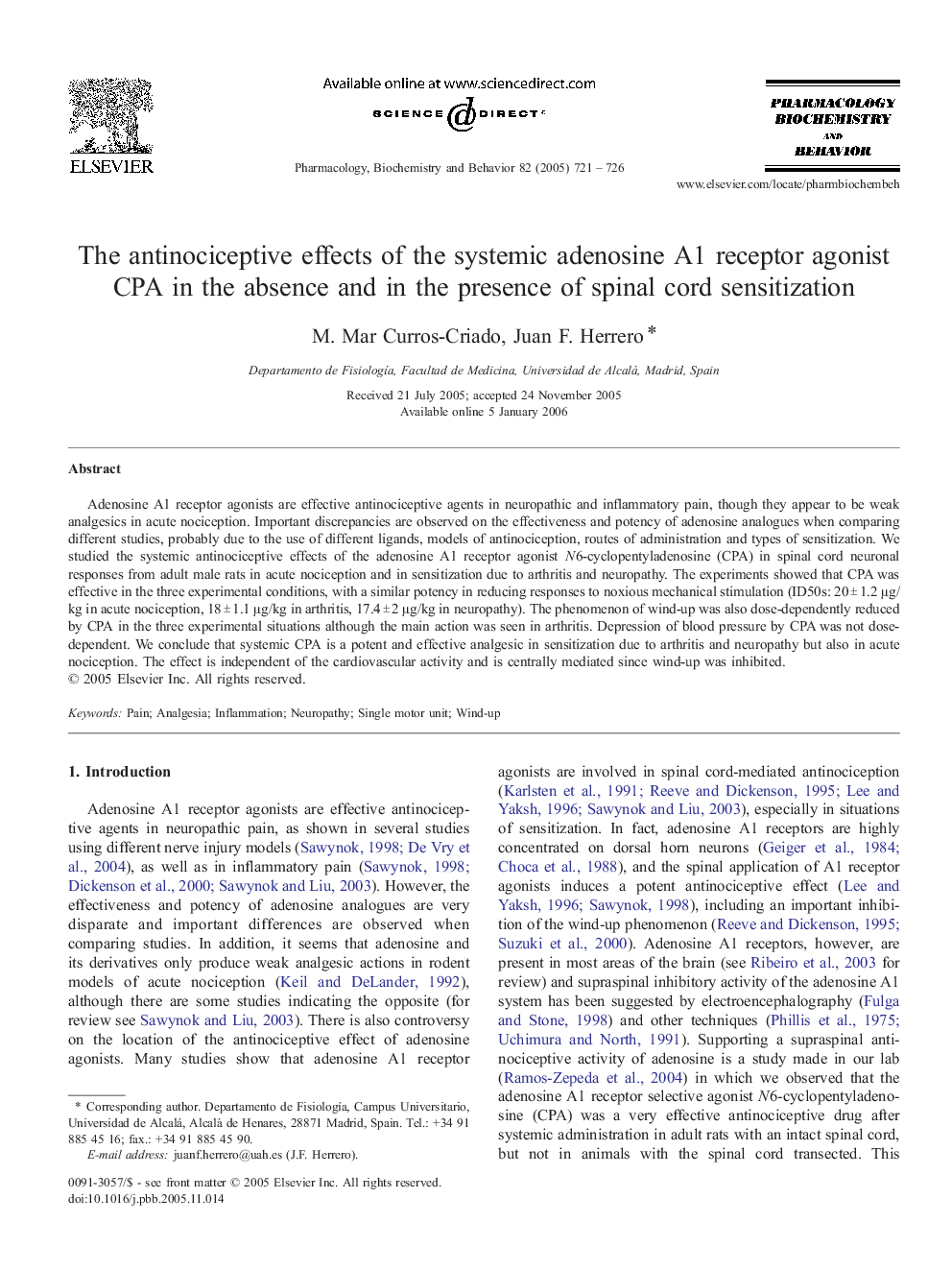| Article ID | Journal | Published Year | Pages | File Type |
|---|---|---|---|---|
| 10838701 | Pharmacology Biochemistry and Behavior | 2005 | 6 Pages |
Abstract
Adenosine A1 receptor agonists are effective antinociceptive agents in neuropathic and inflammatory pain, though they appear to be weak analgesics in acute nociception. Important discrepancies are observed on the effectiveness and potency of adenosine analogues when comparing different studies, probably due to the use of different ligands, models of antinociception, routes of administration and types of sensitization. We studied the systemic antinociceptive effects of the adenosine A1 receptor agonist N6-cyclopentyladenosine (CPA) in spinal cord neuronal responses from adult male rats in acute nociception and in sensitization due to arthritis and neuropathy. The experiments showed that CPA was effective in the three experimental conditions, with a similar potency in reducing responses to noxious mechanical stimulation (ID50s: 20 ± 1.2 μg/kg in acute nociception, 18 ± 1.1 μg/kg in arthritis, 17.4 ± 2 μg/kg in neuropathy). The phenomenon of wind-up was also dose-dependently reduced by CPA in the three experimental situations although the main action was seen in arthritis. Depression of blood pressure by CPA was not dose-dependent. We conclude that systemic CPA is a potent and effective analgesic in sensitization due to arthritis and neuropathy but also in acute nociception. The effect is independent of the cardiovascular activity and is centrally mediated since wind-up was inhibited.
Related Topics
Life Sciences
Biochemistry, Genetics and Molecular Biology
Biochemistry
Authors
M. Mar Curros-Criado, Juan F. Herrero,
